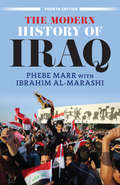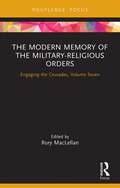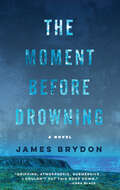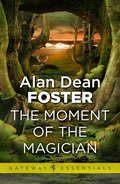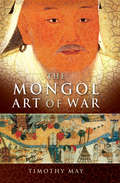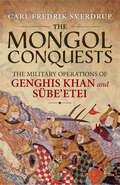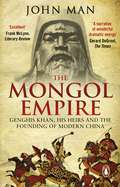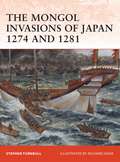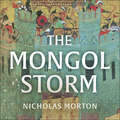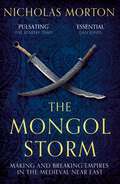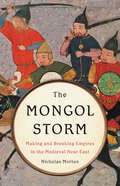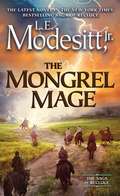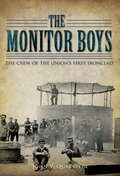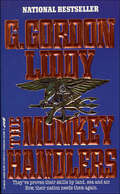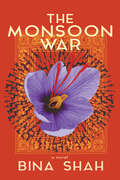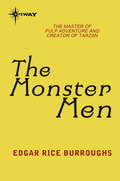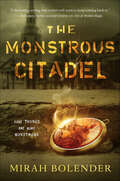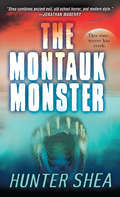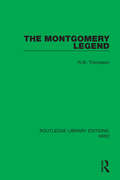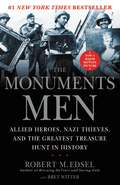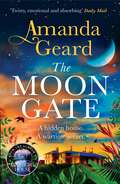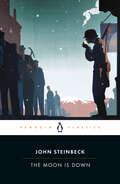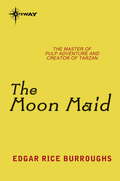- Table View
- List View
The Modern History of Iraq
by Phebe MarrThe Modern History of Iraq is a remarkably readable account of contemporary Iraq, placing in historical perspective the crises and upheavals that continue to afflict the country. This text weaves together several important themes, including the search for a national identity, the struggle to achieve social and economic development, the changes in political dynamics, and the impact of foreign interventions, to provide readers with a holistic understanding of modern Iraq. Revised and updated throughout, the fourth edition features more discussion of cultural identity and media and society. In addition, this edition includes two new chapters on the events and shifts in the country of the early twenty-first century-the US intervention and withdrawal, the stabilization and subsequent unraveling of the Maliki government, the effects of the Arab uprisings, and the rise of ISIS-and their political, economic, and social consequences. Written by noted Iraq scholar Phebe Marr with new co-author Ibrahim al-Marashi, this text is essential reading for readers who seek to understand modern Iraq in the context of historical perspective.
The Modern Memory of the Military-religious Orders: Engaging the Crusades, Volume Seven (Engaging the Crusades)
by Rory MacLellanThis volume examines the pervasive and persistent appropriations of the military orders across a broad chronology and several regions, including Mexico, Brazil, and Greece, areas beyond the traditional focus of prior research in medievalism. Templars, Hospitallers, and Teutonic Knights, the military orders are among the most iconic aspects of the crusades and several still survive as chivalric honours or charitable organisations. In popular culture, the orders, particularly the Templars, have been the subject of or inspiration for films, books, television, and video games, from Star Wars to The Da Vinci Code and Assassin’s Creed. In this volume, an overview of the early legacies of the military orders in the seventeenth and eighteenth centuries is followed by studies of the Templar conspiracy theories of Rosslyn Chapel, the Venerable Order of St John’s creation of a medieval past, the legacy of the Hospitallers in modern Greece, the military orders in nineteenth-century Mexico, and the use of the Knights Templar by the far-right in Bolsonaro’s Brazil. Ultimately, it expands the scope of the field and indicates further avenues for research. The Modern Memory of the Military-religious Orders is a valuable resource for students and scholars of the crusades, the military orders, and medievalism.
The Moment Before Drowning: A Novel
by James Brydon"Brydon's provocative and unsettling first novel...is a remarkably assured debut by a gifted new writer."--Publishers Weekly, STARRED review, Pick of the Week"James Brydon's brilliant The Moment Before Drowning isn't an easy read. Not because of its style, which is sensuous and elegant, but because of its subject matter: the brutality behind war's front lines...After reading The Moment Before Drowning, dedicated readers might want to watch the award-winning docudrama The Battle of Algiers, which covers much of the same territory as Brydon's heart-wrenching novel."--Mystery Scene Magazine"An exploration of political oppression wrapped in a carefully constructed mystery. In Brydon's auspicious debut...the characters are alive and the mystery is mostly satisfying. An erudite and entertaining addition to the shelf."--Kirkus Reviews"Brydon's The Moment Before Drowning is one of the season's most remarkable debuts and the launch of a complex and truly memorable protagonist, Captain Jacques le Garrec, a lion of the French Resistance, now disgraced by his intelligence service in Algeria and returned to his hometown in Brittany, where he's promptly charged with investigating a cold case murder. Le Garrec has stepped directly out of a Jean-Pierre Melville film and into a seaside murder mystery, a noir and ambiguous figure setting out to right wrongs in a world ever more unknowable."--CrimeReads, included in 10 Debut Crime Novels to Read This July"The Moment Before Drowning is a highly lyrical novel. Brydon's prose is exquisite, and he certainly knows how to set a scene."--New York Journal of BooksIncluded in CBC Radio's The Homestretch's Fall 2019 Mystery Selections"A stunning and intelligent debut novel; powerful, intense and raw."--Nudge-Book (UK)"A skillfully constructed and absolutely riveting thriller of a novel by a genuine master of character and narrative driven storytelling, James Brydon's The Moment Before Drowning is an especially recommended addition to community library collections."--Midwest Book Review"Brydon packs in so much emotion, suspense, tension, and heartbreak. This story literally took my breath away...This author is one to be reckoned with and I hope his next literary work will be published soon. Most highly recommended."--Marjorie's World of Books (blog)"The ending, whilst not the one that might have been expected, is one that has occurred many times in literature of all kinds but it doesn't seem in any way hackneyed. This is because the author has taken the trouble to detail the psychology involved in the murder and convinces us that what happened was a consequence of an aspect of human nature that never changes."--Crime Review (UK)December 1959: A furious anticolonial war rages in Algeria. Captain Jacques le Garrec, a former detective and French Resistance hero, returns to France in disgrace. Traumatized after two years of working in the army intelligence services, he's now accused of a brutal crime.As le Garrec awaits trial in the tiny Breton town where he grew up, he is asked to look into a disturbing and unsolved murder committed the previous winter. A local teenage girl was killed and her bizarrely mutilated body was left displayed on the heathland in a way that no one could understand.Le Garrec's investigations draw him into the dark past of the town, still haunted by memories of the German occupation. As he tries to reconstruct the events of the murder, the violence of this crime and his recollections of Algeria intertwine, threatening to submerge him.
The Moment of the Magician (Gateway Essentials #283)
by Alan Dean FosterIn The Moment of the Magician Alan Dean Foster continues the adventures of Jon Thomas Meriweather, the Spellsinger, in a land where magic and constant danger combine against a background of beauty and individual courage. Jon-Tom (as he is known in the land), in his quest to find a way back to his own world, discovers that there exists in the land another human from Earth who may hold the secret he so desperately seeks. This individual, however, is reputedly evil and has strange powers. Jon-Tom's adventures in seeking out this mysterious and dangerous human make this sequel to The Day of Dissonance a suspenseful and exciting saga in the Spellsinger epoch.
The Mongol Art of War: Chinggis Khan And The Mongol Military System
by Timothy MayThe renowned historian &“combines exhaustive research and accessible prose for this . . . definitive study&” of the Mongol empire&’s military practices (Publishers Weekly). The armies of the Mongol empire are one of the most successful, yet least understood, military forces in history. Often viewed as screaming throngs of horsemen who conquered by sheer force of numbers, they were in fact highly organized regiments who blindsided their opponents with innovative tactics and combat skills. Through the leadership of brilliant military strategists, they achieved the largest land empire ever established, stretching across Asia and into eastern Europe. In this pioneering study, historian Timothy May demonstrates how the Mongol military developed from a tribal levy into a disciplined and complex military organization. He describes the make-up of the Mongol army from its inception to the demise of the empire. With profiles of Mongol military leaders such as Chinggis Khan—also known as Genghis Khan—May shows how their strength, quality and versatility made them the pre-eminent warriors of their time.
The Mongol Conquests: The Military Operations of Genghis Khan and Sübe'etei
by Carl Fredrik Sverdrup“A scholarly, detailed history of how the Mongols created the greatest landlocked empire in history” (Midwest Book Review).The Mongols created the greatest landlocked empire known to history. It was an empire created and sustained by means of conquest. Initially an insignificant tribal leader, Genghis Khan gradually increased his power, overcoming one rival after another. After he had subjugated all tribes of Inner Asia, he struck southward into China and later attacked distant Khwarizm in the Near East. Sübe’etei continued to make significant conquests after Genghis Khan died, conquering central China and leading a large force into the heart of Europe. Between them, Genghis Khan and Sube’etei directed more than 40 campaigns, fought more than 60 battles, and conquered all lands from Korea in the east to Hungary and Poland in the west.This book offers a detailed narrative of the military operations of these two leaders, based on early Mongolian, Chinese, Near Eastern, and European sources. Making full use of Chinese sourced not translated properly into any European language, the account offer details never before given in English works. Detailed maps showing the operations support the text. Many conventional wisdom views of the Mongols, such as their use of terror as a deliberate strategy, or their excellence at siege warfare, are shown to be incorrect. This is a major contribution to our knowledge of the Mongols and their way of warfare.“History is littered with great leaders leading great armies and conquering large swathes of the world—Attila the Hun, Alexander the Great, the Roman Empire . . . but none perhaps as staggering as that of Genghis Khan. I have never heard of Sube’etei, I’m ashamed to say, until now, in this excellent book by Carl Fredrik Sverdrup. Asian history has never particularly appealed to me, but this is big history, and the author’s style makes it compelling and readable.” —Books Monthly“This is a very valuable addition to the literature on the Mongol conquests, giving us a much clearer idea of the detailed course of their campaigns, the world in which they took place, and the methods used to win them.” —History of War
The Mongol Empire: Genghis Khan, his heirs and the founding of modern China
by John ManGenghis Khan is one of history's immortals: a leader of genius, driven by an inspiring vision for peaceful world rule. Believing he was divinely protected, Genghis united warring clans to create a nation and then an empire that ran across much of Asia.Under his grandson, Kublai Khan, the vision evolved into a more complex religious ideology, justifying further expansion. Kublai doubled the empire's size until, in the late 13th century, he and the rest of Genghis’s ‘Golden Family’ controlled one fifth of the inhabited world. Along the way, he conquered all China, gave the nation the borders it has today, and then, finally, discovered the limits to growth.Genghis's dream of world rule turned out to be a fantasy. And yet, in terms of the sheer scale of the conquests, never has a vision and the character of one man had such an effect on the world.Charting the evolution of this vision, John Man provides a unique account of the Mongol Empire, from young Genghis to old Kublai, from a rejected teenager to the world’s most powerful emperor.
The Mongol Invasions of Japan 1274 and 1281
by Stephen Turnbull Richard HookThe two attempts by Khubilai Khan, the Mongol Emperor of China, to invade Japan in 1274 and 1281 represent unique events in the history of both countries. It pitted the samurai of Japan against the fierce warriors of the steppes who had conquered half the known world.The Mongol conquest of Korea left them with a considerable quantity of maritime resources, which enabled them to thin seriously for the first time about crossing the Tsushima strait between Korea and Japan with an army of invasion. The first invasion, which began with savage raiding on the islands of Tsushima and Iki, made a landfall at Hakata Bay and forced the samurai defenders back inland. Luckily for the Japanese defenders, a storm scattered the Mongol invasion fleet, leading them to abandon this attempt. In the intervening years the Japanese made defensive preparation, and the Mongol increased their fleet and army, so that the second invasion involved one of the largest seaborne expeditions in world history up to that time. This attempt was aimed at the same landing site, Hakata Bay, and met stiffer opposition form the new defences and the aggressive Japanese defenders. Forced buy a series of major Japanese raids to stay in their ships at anchor, the Mongol fleet was obliterated by a typhoon - the kami kaze (divine wind) - for the loss of as many as 90 per cent of the invaders. Although further preparations were made for an assault by the Mongols at the end of the 13ht and beginning of the 14th centuries, this proved to be the last realistic threat of an invasion of the home islands till 1945.
The Mongol Storm: Making and Breaking Empires in the Medieval Near East
by Nicholas MortonHow the Mongol invasions of the Near East reshaped the balance of world power in the Middle Ages. For centuries, the Crusades have been central to the story of the medieval Near East, but these religious wars are only part of the region's complex history. As The Mongol Storm reveals, during the same era the Near East was utterly remade by another series of wars: the Mongol invasions. In a single generation, the Mongols conquered vast swaths of the Near East and upended the region's geopolitics. Amid the chaos of the Mongol onslaught, long-standing powers such as the Byzantines, the Seljuk Turks, and the crusaders struggled to survive, while new players such as the Ottomans arose to fight back. The Mongol conquests forever transformed the region, while forging closer ties among societies spread across Eurasia. This is the definitive history of the Mongol assault on the Near East and its enduring global consequences.(P) 2022 Hodder & Stoughton Limited
The Mongol Storm: Making and Breaking Empires in the Medieval Near East
by Nicholas Morton'Deeply researched and elegantly written - essential reading' Dan JonesHow the Mongol invasions of the Near East reshaped the balance of world power in the Middle Ages. For centuries, the Crusades have been central to the story of the medieval Near East, but these religious wars are only part of the region's complex history. As The Mongol Storm reveals, during the same era the Near East was utterly remade by another series of wars: the Mongol invasions. In a single generation, the Mongols conquered vast swaths of the Near East and upended the region's geopolitics. Amid the chaos of the Mongol onslaught, long-standing powers such as the Byzantines, the Seljuk Turks, and the crusaders struggled to survive, while new players such as the Ottomans arose to fight back. The Mongol conquests forever transformed the region, while forging closer ties among societies spread across Eurasia. This is the definitive history of the Mongol assault on the Near East and its enduring global consequences.
The Mongol Storm: Making and Breaking Empires in the Medieval Near East
by Nicholas MortonHow the Mongol invasions of the Near East reshaped the balance of world power in the Middle Ages For centuries, the Crusades have been central to the story of the medieval Near East, but these religious wars are only part of the region&’s complex history. As The Mongol Storm reveals, during the same era the Near East was utterly remade by another series of wars: the Mongol invasions. In a single generation, the Mongols conquered vast swaths of the Near East and upended the region&’s geopolitics. Amid the chaos of the Mongol onslaught, long-standing powers such as the Byzantines, the Seljuk Turks, and the crusaders struggled to survive, while new players such as the Ottomans arose to fight back. The Mongol conquests forever transformed the region, while forging closer ties among societies spread across Eurasia. This is the definitive history of the Mongol assault on the Near East and its enduring global consequences.
The Mongrel Mage (Saga of Recluce #19)
by L. E. Modesitt Jr.The Saga of Recluce chronicles the history of this world with world-building detail and an ingenious and disciplined magic system. L. E. Modesitt, Jr. returns to his longest and bestselling fantasy series with volume nineteen, The Mongrel Mage, which marks the beginning of a new story arc. In the world of Recluce, powerful mages can wield two kinds of magic—the white of Chaos or the black of Order. Beltur, however, has talents no one dreamed of, talents not seen in hundreds of years that blend both magics. On the run from a power hungry white mage, Beltur is taken in by Order mages who set him on the path to discover and hone his own unique gifts and in the process find a home.However, when the white mage he fled attempts to invade his new home, Beltur must hope his new found power will be enough to save them all. Saga of Recluce #1 The Magic of Recluce / #2 The Towers of the Sunset / #3 The Order War / #4 The Magic Engineer / #5 The Death of Chaos / #6 Fall of Angels / #7 The Chaos Balance / #8 The White Order / #9 Colors of Chaos / #10 Magi’i of Cyador / #11 Scion of Cyador / #12 Wellspring of Chaos / #13 Ordermaster / #14 Natural Order Mage / #15 Mage-Guard of Hamor / #16 Arms-Commander / #17 Cyador’s Heirs / #18 Heritage of Cyador / #19 The Mongrel Mage Story Collection: Recluce Tales Other Series by L.E. Modesitt, Jr. The Imager Portfolio, The Corean Chronicles, The Spellsong Cycle, The Ghost Books, The Ecolitan Matter At the Publisher's request, this title is being sold without Digital Rights Management Software (DRM) applied.
The Monitor Boys: The Crew of the Union's First Ironclad (Civil War Series)
by John V QuarsteinThe stories of the officers and crew who served aboard the ironclad warship up until that fateful stormy New Year&’s Eve in 1862. The United States Navy&’s first ironclad warship rose to glory during the Battle of Hampton Roads on March 9, 1862, but there's much more to know about the USS Monitor. Historian John Quarstein has painstakingly compiled bits of historical data gathered through years of research to present the first comprehensive picture of the lives of the officers and crew who served faithfully in an iron ship unlike any vessel previously known. &“The Monitor Boys,&” a moniker the men gave themselves, is a reflection of how these hundred-odd souls were bound together through storms, battles, boredom, and disaster. Just living aboard the ironclad took uncommon effort and fortitude. Their perseverance through the heat, stress, and unseaworthiness that defined life on the ship makes the study of those who dared it a worthy endeavor. Many recognized that they were part of history. Moreover, the Monitor Boys were agents in the change of naval warfare. Following Quarstein&’s compelling narrative is a detailed chronology as well as appendices including crew member biographies, casualties, and statistics and dimensions of the ship. Readers can dive into the world of the Monitor and meet William Flye, George Geer, and the rest of the men who risked everything by going to sea in the celebrated &“cheesebox on a raft&” and became the hope of a nation wracked by war. Includes illustrations
The Monkey Handlers
by G. Gordon LiddyThe brave, the proud, the damned... Sara Rosen: Dark, impulsive beauty-- her radical acts on behalf of animal rights land her in terrible danger.... Michael Stone: He kept the tools of his former trade closed up in a trunk. Now he must open his SEAL war chest-- to strike at the heart of international terrorism. Al Rajul: He's never been photographed or identified. Now he has the weapon he's been looking for-- to spread horror and death through the heart of the United States... in The Monkey Handlers by G. Gordon Liddy.
The Monsoon War: A Novel
by Bina ShahThe acclaimed author of Before She Sleeps returns to a feminist dystopia in this novel of women rising up to break the bonds of polygamy and repression. In a country bent on controlling women&’s bodily autonomy and reproductive freedom, a resistance has formed. An armed group of women known as the Hamiyat have made a name for themselves protecting those too weak to fight back. And now they are going on the offensive . . . Three women among its ranks must make the hardest choices of their lives. Alia Musa, wife of three husbands, joins the Hamiyat to stand up for the daughters she loves. Young soldier Katy Azadeh is kidnapped and finds her beliefs sorely tested by the country of Eastern Semitia and its seductive promises, while commander Fatima Kara must weigh the balance of her soldiers&’ lives against a once-in-a-lifetime gambit for freedom. Called &“a haunting, dystopian thriller . . . [that] fans of The Handmaid&’s Tale won&’t want to miss,&” Before She Sleeps was just the beginning, awakening readers to an all-too-believable future (Publishers Weekly, starred review). Now The Monsoon War will take you to the front lines of a desperate battle against a government standing on the necks of the women they thought were broken. &“A cinematic mashup of spy tale, geopolitical [science-fiction], and war epic.&” —Kirkus Reviews &“Betrayals, reversals, action and nail-biting suspense make for an addictive story . . . and the characters and their incandescent fellowship will keep you obsessed.&” —The Washington Post Praise for Before She Sleeps &“Female-centered #Dystopia from #Pakistan: Before She Sleeps, Bina Shah. Fascinating new angle on &‘emotional work&’!&” —Margaret Atwood on Twitter &“The most subtly disturbing of dystopias, richly textured and appallingly intimate, Before She Sleeps has hints of Huxley and Atwood but is uniquely Bina Shah.&” —Nick Harkaway, author of Gnomon
The Monster Men
by Edgar Rice BurroughsThey called him Number Thirteen, the latest and best of Dr. Von Horn's attempts to make life from lifeless chemicals. He found himself an almost-human on Von Horn's hideaway jungle island off the coast of Borneo. He saw the monsters that had preceded him and grew used to those dreadful travesties of humanity. Not until Number Thirteen met the American girl who was Von Horn's unwilling prisoner did he realize how different he was from the others. Because, monster or not, he turned against his master and threw in his lot with the girl and his friends in their desperate effort to escape the island of terror. The story of THE MONSTER MEN is an Edgar Rice Burroughs novel of savages, primitive monsters and jungles in the best Tarzan style.
The Monstrous Citadel (Chronicles of Amicae #2)
by Mirah BolenderThe Monstrous Citadel is the sequel to Mirah Bolender's City of Broken Magic—a fast-paced, adventure fantasy where a bomb squad defuses the magic weapons of a long forgotten war.Amicae, City of Sweepers, survived the Falling Infestation which nearly destroyed it thanks to the efforts of Laura and Okane. While the ancient monsters have been beaten back for the moment, new and more monstrous dangers face them in the form of belligerent bureaucracy, dangerous gangs, grasping Sweepers bent on personal glory . . .And Rex, the City of Kings, who breed their own kind of monstrosity. Laura and Okane must go to Rex to reclaim the secret weaponry that keeps Amicae safe and come face to face with a horrifying truth about the Rex and their designs on all of Orien's cities.Chronicles of AmicaeCity of Broken MagicThe Monstrous CitadelFortress of MagiAt the Publisher's request, this title is being sold without Digital Rights Management Software (DRM) applied.
The Montauk Monster
by Hunter SheaA terrifying new species of predator is loose in a New England resort town in this &“wholly enthralling hulk of a summer beach read&” (Publishers Weekly). On a hot summer night in Montauk, the bodies of two local bar patrons are discovered in the dunes, torn to shreds, their identities unrecognizable. In another part of town, a woman's backyard is invaded by four creatures that defy description. What's clear is that they&’re hostile—and they're ravenous. With every sunset the terror rises again, infecting residents with a virus no one can cure. The CDC can't help them; FEMA can't save them. But each savage attack brings Suffolk County Police Officer Gray Dalton one step closer to the shocking source of these unholy creations. Hidden on nearby Plum Island, a U.S. research facility has been running top-secret experiments. What they created was never meant to see the light of day. Now, a vacation paradise is going straight to hell. &“Shea combines ancient evil, old school horror, and modern style.&” —Jonathan Maberry, New York Times–bestselling author
The Montgomery Legend (Routledge Library Editions: WW2 #18)
by R.W. ThompsonThis book, first published in 1967, examines the foundations and the substance of the Montgomery Legend. His appearance upon the scene in the Western Desert coincided with a change in warfare as ‘ironmongery replaced generalship’, as General Fuller observed, and with Montgomery’s victories came a British need for a Champion for all to see. The public needed a Hero as Britain’s time on the ropes ended, and it was also politically necessary, lest Britain be swamped by the power of its allies.
The Monuments Men: Allied Heroes, Nazi Thieves, and the Greatest Treasure Hunt in History
by Bret Witter Robert M. EdselAt the same time Adolf Hitler was attempting to take over the western world, his armies were methodically seeking and hoarding the finest art treasures in Europe. The Fuehrer had begun cataloguing the art he planned to collect as well as the art he would destroy: "degenerate" works he despised. In a race against time, behind enemy lines, often unarmed, a special force of American and British museum directors, curators, art historians, and others, called the Momuments Men, risked their lives scouring Europe to prevent the destruction of thousands of years of culture. Focusing on the eleven-month period between D-Day and V-E Day, this fascinating account follows six Monuments Men and their impossible mission to save the world's great art from the Nazis.
The Moon Gate: A sweeping tale of love, war and a house of secrets for fans of historical fiction NEW for 2023
by Amanda GeardA faded photograph. An abandoned house. A wartime secret . . .From the author of the Richard and Judy Book Club pick The Midnight House, a mesmerising story of love, war, and a mystery that ensnares three generations, sweeping the reader from London to Tasmania and to Ireland. Perfect for fans of Kate Morton, Lucinda Riley and Eve Chase.'A rich, sweeping mystery . . . beautifully written, atmospheric and intriguing' Tracy Rees, author of The Elopement'Magnificent! Cleverly woven plots, storylines and heartbreak . . . I loved it' Lorna Cook, bestselling author of The Forgotten Village'A richly layered atmospheric story that transports the reader . . . I was drawn in from the first page' Jacquie Bloese, author of The French House'Divine . . . I relished every single word of this heart-rending story, full of love and sacrifice' Jenny Ashcroft, bestselling author of Beneath a Burning Sky-----1939: On the eve of war, young English heiress Grace Grey travels from London to the wilderness of Tasmania. Coaxed out of her shell by the attentions of her Irish neighbour, Daniel - Grace finally learns to live. But when Australian forces are called to the frontline, and Daniel with them, he leaves behind a devastating secret which will forever bind them together.1975: Artist Willow Hawkins, and her new husband, Ben, can't believe their luck when an anonymous benefactor leaves them a house on the remote Tasmanian coast. Confused and delighted, they set out to unmask Towerhurst's previous owner - unwittingly altering the course of their lives.2004: Libby Andrews has always been sheltered from the truth behind her father Ben's death. When she travels to London and discovers a faded photograph, a long-buried memory is unlocked, and she begins to follow an investigation that Ben could never complete. But will she realise that some secrets are best left buried . . .?------YOUR FAVOURITE AUTHORS LOVE AMANDA GEARD . . . 'I loved The Midnight House. Wonderful storytelling' RACHEL HORE'A wonderful tale of family secrets, brimming with lush historical detail' HAZEL GAYNOR'A multi-layered mystery spanning generations, evocative and beautifully written' TRACY REES'I loved it. An intriguing story with wonderful characters' RACHAEL ENGLISH'I really, really loved it. A wonderful mystery. Totally atmospheric and just wonderfully escapist' LORNA COOK'A gorgeous setting, wonderful characters and secrets that kept me glued to the pages' JENNY ASHCROFT'I was pulled in from page one. It's beautiful and I love it' LIZ FENWICK'Intriguing, moving and I loved the wat the stories moved back and forth in time' SINEAD MORIARTY
The Moon Gate: A sweeping tale of love, war and a house of secrets for fans of historical fiction NEW for 2023
by Amanda GeardA faded photograph. An abandoned house. A wartime secret . . .From the author of the Richard and Judy Book Club pick The Midnight House, a mesmerising story of love, war, and a mystery that ensnares three generations, sweeping the reader from London to Tasmania and to Ireland. Perfect for fans of Kate Morton, Lucinda Riley and Eve Chase.'A rich, sweeping mystery . . . beautifully written, atmospheric and intriguing' Tracy Rees, author of The Elopement'Magnificent! Cleverly woven plots, storylines and heartbreak . . . I loved it' Lorna Cook, bestselling author of The Forgotten Village'A richly layered atmospheric story that transports the reader . . . I was drawn in from the first page' Jacquie Bloese, author of The French House'Divine . . . I relished every single word of this heart-rending story, full of love and sacrifice' Jenny Ashcroft, bestselling author of Beneath a Burning Sky-----1939: On the eve of war, young English heiress Grace Grey travels from London to the wilderness of Tasmania. Coaxed out of her shell by the attentions of her Irish neighbour, Daniel - Grace finally learns to live. But when Australian forces are called to the frontline, and Daniel with them, he leaves behind a devastating secret which will forever bind them together.1975: Artist Willow Hawkins, and her new husband, Ben, can't believe their luck when an anonymous benefactor leaves them a house on the remote Tasmanian coast. Confused and delighted, they set out to unmask Towerhurst's previous owner - unwittingly altering the course of their lives.2004: Libby Andrews has always been sheltered from the truth behind her father Ben's death. When she travels to London and discovers a faded photograph, a long-buried memory is unlocked, and she begins to follow an investigation that Ben could never complete. But will she realise that some secrets are best left buried . . .?------YOUR FAVOURITE AUTHORS LOVE AMANDA GEARD . . . 'I loved The Midnight House. Wonderful storytelling' RACHEL HORE'A wonderful tale of family secrets, brimming with lush historical detail' HAZEL GAYNOR'A multi-layered mystery spanning generations, evocative and beautifully written' TRACY REES'I loved it. An intriguing story with wonderful characters' RACHAEL ENGLISH'I really, really loved it. A wonderful mystery. Totally atmospheric and just wonderfully escapist' LORNA COOK'A gorgeous setting, wonderful characters and secrets that kept me glued to the pages' JENNY ASHCROFT'I was pulled in from page one. It's beautiful and I love it' LIZ FENWICK'Intriguing, moving and I loved the wat the stories moved back and forth in time' SINEAD MORIARTY
The Moon Gate: A sweeping tale of love, war and a house of secrets for fans of historical fiction NEW for 2023
by Amanda GeardA faded photograph. An abandoned house. A wartime secret . . .From the author of the Richard and Judy Book Club pick The Midnight House, a mesmerising story of love, war, and a mystery that ensnares three generations, sweeping the reader from London to Tasmania and to Ireland. Perfect for fans of Kate Morton, Lucinda Riley and Eve Chase.1939: On the eve of war, young English heiress Grace Grey travels from London to the wilderness of Tasmania. Coaxed out of her shell by the attentions of her Irish neighbour, Daniel - Grace finally learns to live. But when Australian forces are called to the frontline, and Daniel with them, he leaves behind a devastating secret which will forever bind them together.1975: Artist Willow Hawkins, and her new husband, Ben, can't believe their luck when an anonymous benefactor leaves them a house on the remote Tasmanian coast. Confused and delighted, they set out to unmask Towerhurst's previous owner - unwittingly altering the course of their lives.2004: Libby Andrews has always been sheltered from the truth behind her father Ben's death. When she travels to London and discovers a faded photograph, a long-buried memory is unlocked, and she begins to follow an investigation that Ben could never complete. But will she realise that some secrets are best left buried . . .?------YOUR FAVOURITE AUTHORS LOVE AMANDA GEARD . . . 'I loved The Midnight House. Wonderful storytelling' RACHEL HORE'A wonderful tale of family secrets, brimming with lush historical detail' HAZEL GAYNOR'A multi-layered mystery spanning generations, evocative and beautifully written' TRACY REES'I loved it. An intriguing story with wonderful characters' RACHAEL ENGLISH'I really, really loved it. A wonderful mystery. Totally atmospheric and just wonderfully escapist' LORNA COOK'Intriguing, moving and I loved the wat the stories moved back and forth in time' SINEAD MORIARTY(P) 2023 Headline Publishing Group Ltd
The Moon Is Down (Penguin Audio Classics Ser.)
by John Steinbeck Donald V. CoersOriginally published at the zenith of Nazi Germany's power, Steinbeck's fable THE MOON IS DOWN explores the effects of invasion on both the conquered and the conquerors. Occupied by enemy troops, a small, peaceable town comes face-to-face with evil imposed from the outside and betrayal from within the close-knit community. As he delves into the motivations and emotions of the enemy, Steinbeck uncovers profound and often unsettling truths both about war and human nature.
The Moon Maid
by Edgar Rice BurroughsIn the late twentieth century, Admiral Julian 3rd can get no rest, for he knows his future. He will be reborn as his grandson in the next century to journey through space and make an ominous discovery inside the moon; he will live again in the dark years of the twenty-second century as Julian 9th, who refuses to bow down to the victorious Moon Men; and as Julian 20th, the fierce Red Hawk, he will lead humanity's final battle against the alien invaders in the twenty-fifth century. The Moon Maid is Edgar Rice Burroughs's stunning epic of a world conquered by alien invaders from the moon and of the hero Julian, who champions the earth's struggle for freedom, peace, and dignity.
